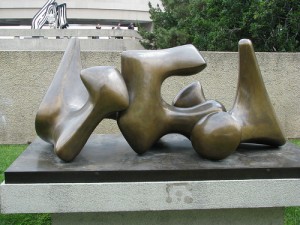
Spine and 11 Symptoms as a Sign of Warning That it is in Trouble
There’s no other health care profession other than Chiropractic that can detect as well as treat the condition that is called as the Vertebral Subluxation Complex (VSC). In chiropractic, this is what is found to be the contributor for the spinal and other spine-related disorders.
In order to understand the VSC, it’s best to know what vertebral subluxation means. When a vertebra is not in its normal position compared to the vertebrae above or below, it is called a subluxated vertebrae (misaligned vertebrae). When a vertebrae is misaligned, it produces a mechanical stress to the surrounding soft tissues: discs, muscles, joints, ligaments and tendons through regular wear and tear. In effect, the patient would experience muscle spasms on the affected area, inflammation, tenderness, pain and even reduced mobility of the spine. With the effects of the subluxation, nerve functions may also be impaired and once this happens, the communication between the nerves of our body’s organs is compromised and the optimal health as well as our well-being would be affected.
The Vertebral Subluxation Complex has 5 components. These components must all be eliminated in order for a complete and proper healing to take place. The 5 components of the VSC are:
- Kinesiopathology – which is the loss of the motion and positioning of the vertebra compared to the vertebrae alongside it.
- Myopathology – which refers to muscle atrophy or spasm
- Neuropathology – is the irritation or compression of the nerve tissue
- Histopathology – is the localized inflammation or swelling.
- Pathophysiology – It is the pathophysiological change experienced after the first four components already took place.
During the first episode of VSC, the first 4 components take place. You can consider this as similar to having an inflamed tooth. With an inflamed tooth you would notice some swelling on the area of the jaw where the tooth is. Similar type of inflammation one will find on the area where the VSC occurs. In order to get this treated, you should not rely on pain as an indicator. Even if there is no more pain on the affected area, this does not mean that the vertebral subluxation had already healed and normalized with or without any treatment. Pain is a poor indicator when the healing process is not completed even when the pain has already subsided. The 5th component, the pathology occurs when all the first four components had already occurred and this is the end result of vertebral subluxation complex when it remains untreated.
So, is there a way to avoid vertebral misalignment? The VS have many causes which we are all exposed to on a daily basis. There are physical causes such as repetitive motions that are affecting our spine, an acute trauma to body, bad posture, bad habits at work where the workstation is not ergonomic. Aside from the physical causes, there are also the chemical and emotional causes. Chemical causes include poor diet and nutrition, intake of alcohol or use of drugs, chemicals in the water and the air we breath as well as ingestion of toxins through the foods we eat. The emotional cause of vertebral subluxation is stress. Emotional stress has an impact on our physical body and health. With emotional stress, we become more prone to diseases and even injury. Sadly, we cannot really prevent vertebral subluxation and the vertebral subluxation complex that goes with it as we are all exposed to its cause every day. If you want to find out which vertebral level is subluxated, an appointment with your local Doctor of Chiropractic would be a good start. Some of the offices offer FREE consultation and orthopedic and neurological examination.
One might experience the following symptoms that would confirm you have a vertebral subluxation.
1. posture imbalance
2. neck pain: sore, stiff or tender
3. back pain: sore, stiff, or tender
4. muscle spasm on the spine- tight or weak spasms
5. headaches
6. hypomobility
7. joint pain
8. stiffness
9. dizziness
10. low energy
11. poor state of health
Often times a person might not have any symptoms at all, however, it doesn’t mean one is free from a vertebral subluxation. Again, as an example, the tooth with cavities won’t hurt unless the cavities reach the sensitive dentin layer. So it doesn’t mean that if you don’t feel any pain or numbness, you don’t have cavities. Regular evaluation of the spine is recommended to check if subluxation is present on the vertebrae.
Your local Doctor of Chiropractic knows how to correct vertebral subluxations through different techniques and procedures. Spinal adjustments are involved to correct the spinal vertebrae that suffer from subluxation. By this adjustment, the subluxated vertebra will eventually reach normal biomechanics on the vertebrae above and below and will help to restore the function of the joint. Corrected joint will maintain a proper posture of your spine.
Question: Have you ever experienced any of the 11 symptoms? What was your course of action in order to stop these symptoms?